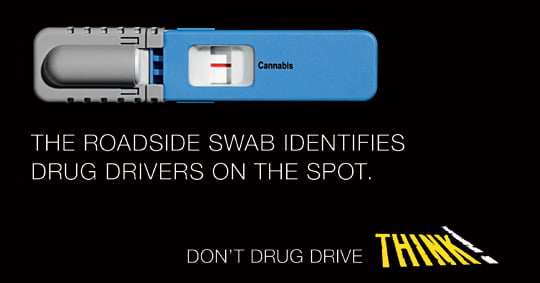Drug-drive limits
On 2 March 2015 Section 5A of the Road Traffic Act 1988 came into force. For the first time the law prescribed upper limits for the level of specific controlled drugs in a driver’s blood, in the same way as we have a drink drive limit.
I’ve just caught up with first year’s evaluation of the new legislation, produced by risk solutions and the Centre for Public Health at Liverpool John Moores University for the Department of Transport.
Although dated April 2017, the evaluation was actually published on 27 August 2017.
Testing
Police services now administer a saliva test (usually at the roadside) which is then followed up with a blood test as and when required.
The evaluation analyses data from 24 police forces on 4,292 preliminary drug screening tests.
The data shows that 54% of preliminary screening tests for drugs were positive for either cannabis, cocaine, or both.
75% of the positive tests were positive for cannabis only, 14% for cocaine only, while 11% indicated the presence of both cannabis and cocaine:

Police officers mainly tested younger drivers (64% of all tests were administered to drivers under the age of 30) and the evaluation also records positive test rates by ethnicity:

Interestingly, nearly one third of positive cannabis tests were NOT confirmed by blood analysis with 31% tests being at or below the limit for THC specified in the regulations – which is 2 μg/litre. The reasons for this is not clear in the evaluation which reports that some police officer interviewees regard this figure as too high and a result of “guard banding.” Guard banding reflects the practice of deducting a certain amount from the analysis result to reflect analytical uncertainty.

By contrast, 83% saliva tests which were positive for cocaine were confirmed by subsequent drug tests.
Key findings
- Police are using the new offence – prosecutions under the new Section 5A were higher in 2015 than for the pre-existing Section 4 impairment drug driving offences, and the latter were at a similar level to 2014. This suggests that the new offence is being used in addition to the existing Section 4 offence, and not simply replacing it. It also suggests that police forces are still using the existing offence where appropriate, and that the new offence has led to additional police activity against drug drivers, rather than being used as an easier route to convicting those who would have been convicted in any case. There is evidence that use of the new offence rose steadily throughout 2015 and has increased in 2016.
- The majority of preliminary drug screening tests (saliva tests) are carried out at the roadside indicating that police forces are employing the drug screening kits during traffic operations. For the period when we collected this data, most of the drivers tested were young men and 55% of the tests were positive for cannabis, cocaine or both.
- On the basis of the data collected to date, higher conviction rates for drug driving prosecutions under the new legislation are being realised. Section 4 offence conviction rates have been approximately 80% since 2012, whereas in 2015, proceedings brought for Section 5A offences had a conviction rate of 98% – which is similar to those achieved for drink driving (96%). Note however, that this may in part be because cases with ‘not guilty’ pleas take longer to make their way through the system and so many of these have not yet been tried.
- Public awareness of the new offence has increased since the awareness campaign around its introduction. 16% of drivers were aware of the new offence before it was introduced. This increased to 48% of drivers after the legislation was implemented.
- Approximately 77% of drivers and 67% of non-drivers think that the punishment for drug driving should be the same as that for drink driving, and similar proportions think that drug drivers are unlikely to be caught. These attitudes have not changed since introduction of the new legislation.
- While it is too soon to determine whether there is a statistically significant and sustained downward trend, the percentage of people who reported taking illegal drugs in the last twelve months and who also reported driving while under the influence of those drugs, reduced from 9.2% in 2014/15 to 5.0% in 2015/16.
Penalties
To explore how Magistrates deal with drug driving as an offence compared with drink driving (for which they have much more experience over many years), the evaluation compared fines imposed for drug driving and drink driving.
The average (mean) fine for drug driving was £182, with a median fine of £132 and the most common fine being £120. The average (mean) fine for drink driving was considerably more – £236. The maximum fine in our records was £1,000. In almost 16% of these 592 records, no fine was recorded. In approximately a third of these cases, community orders for unpaid work were made, ranging from 20 to 250 hours. In 13% of cases, curfew orders were made, with electronic tagging. In a few cases, offenders were referred to youth offending panels, and in others, offenders were imprisoned, or given a suspended prison sentence.
Another tool
Interestingly, some police officers believed that the new offence (and the saliva test) could help disrupt local crime with Merseyside Police routinely administering the test when they stopped motor vehicles whose driver and/or passengers were suspected of being involved in local firearms offences.
Conclusion
It remains to be seen whether police make increasing use of their new drug test powers over the next few years. I will be particularly interested to see whether it becomes a popular policing tool to target local gang/drug-dealing related activity.







